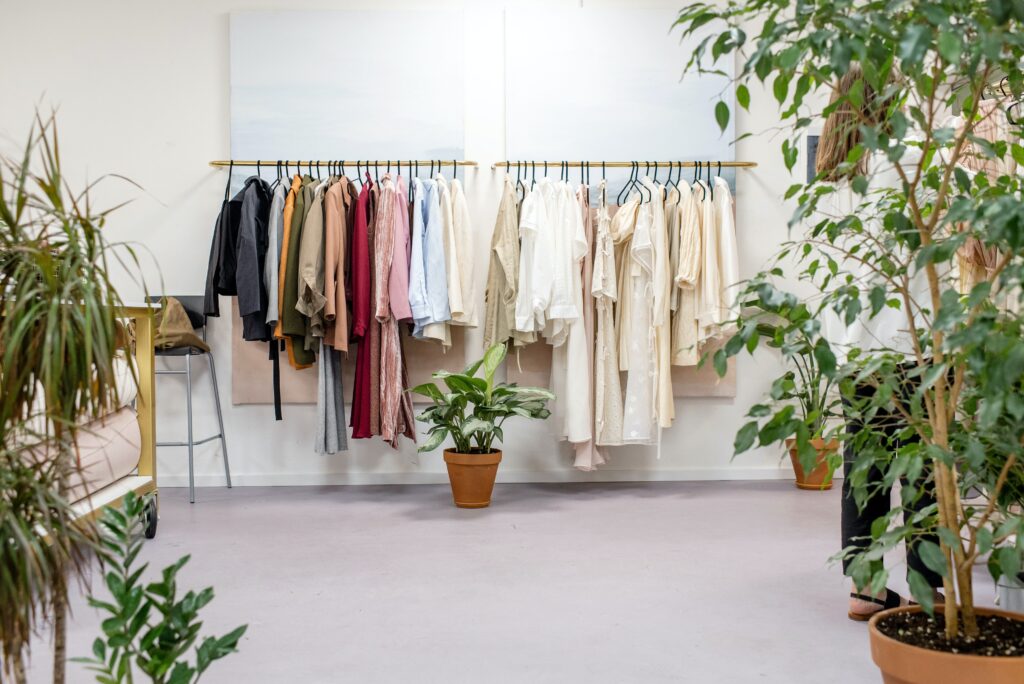Are you looking to make a positive impact on the environment through your wardrobe choices?
Fashion has a profound impact on the environment, with the fashion industry being one of the largest polluters in the world. From the production of raw materials to the disposal of clothing, every aspect of the fashion industry has far-reaching environmental consequences.
As awareness of this issue grows, more and more people are turning to sustainable and eco-friendly fashion as a solution. Building a sustainable wardrobe is not only beneficial for the environment, but it can also be a rewarding and fulfilling experience. In this article, we will explore the importance of sustainable and eco-friendly fashion, and provide tips on how to create a greener wardrobe. By the end of this guide, you will have the knowledge and resources to build a wardrobe that not only looks great, but also helps create a greener future.
Understanding Sustainable and Eco-Friendly Fashion
Understanding sustainable and eco-friendly fashion is an important step towards reducing our environmental impact and promoting more ethical and responsible fashion practices. Sustainable fashion refers to clothing that is made using environmentally friendly materials and production methods, while eco-friendly fashion takes into account the entire lifecycle of a garment, including its disposal and impact on the environment.
Choosing sustainable clothing options can have numerous benefits, including reduced carbon emissions, decreased water usage, and the promotion of fair labor practices. However, there are common misconceptions about eco-friendly fashion, such as the belief that sustainable clothing is too expensive or lacks style. In reality, there are a variety of affordable and stylish sustainable clothing options available, from recycled and organic materials to vintage and secondhand garments. By understanding the principles of sustainable and eco-friendly fashion, we can make more informed choices about the clothing we purchase and promote a more sustainable and responsible fashion industry.
Tips for Building a Sustainable Wardrobe
Building a sustainable wardrobe is a process that requires conscious decision-making and a commitment to making more ethical and responsible fashion choices.
To begin, assess your current wardrobe and identify areas where you can make improvements, such as reducing fast fashion purchases or investing in higher quality, longer-lasting pieces. Prioritizing quality over quantity is also important, as it promotes a more sustainable and long-term approach to fashion. When choosing fabrics and materials, opt for those that are eco-friendly and sustainable, such as organic cotton, bamboo, and recycled materials.
Supporting ethical and sustainable fashion brands is another key step in building a sustainable wardrobe, as it encourages more responsible production and labor practices. Embracing second-hand shopping and clothing swaps can also be a fun and sustainable way to refresh your wardrobe while reducing waste. Finally, learning to repair and upcycle your clothing, as well as properly caring for and maintaining your garments, can extend their lifespan and reduce the need for frequent replacements.
Overcoming Challenges in Building a Sustainable Wardrobe
Building a sustainable wardrobe can present certain challenges, such as navigating the higher costs associated with eco-friendly clothing. While sustainable clothing may come with a higher price tag, it is important to recognize the long-term value and impact of investing in quality, environmentally-friendly pieces. Another challenge is finding sustainable options in different clothing categories, as some items may be more difficult to source sustainably than others. However, with the growing demand for sustainable fashion, more brands are beginning to offer eco-friendly options across a range of clothing categories. Finally, balancing personal style with eco-conscious choices can also be a challenge. It is important to remember that sustainable fashion does not have to mean sacrificing personal style, as there are many ethical and sustainable fashion brands offering a wide range of styles to choose from. By being mindful of these challenges and actively seeking out sustainable fashion options, it is possible to build a wardrobe that is both stylish and environmentally responsible.
The Broader Impact of a Sustainable Wardrobe
Building a sustainable wardrobe not only benefits the individual, but also has a broader impact on the fashion industry and the environment. By prioritizing eco-friendly clothing options, individuals can reduce their personal environmental footprint by minimizing the amount of waste produced and conserving natural resources. Additionally, by supporting ethical and sustainable fashion brands, consumers can encourage the industry as a whole to adopt more environmentally-friendly practices. This can lead to a reduction in harmful chemicals and materials used in production, as well as an increase in fair labor practices. Finally, individuals who choose to build a sustainable wardrobe can inspire others to make similar eco-friendly choices in their own fashion choices, leading to a wider cultural shift towards more sustainable and ethical fashion practices.
In conclusion, building a sustainable and eco-friendly wardrobe is a meaningful and impactful way to contribute towards a greener future.
We have discussed the importance of understanding sustainable and eco-friendly fashion, and the benefits of making eco-conscious choices when building our wardrobes.
We have explored practical tips such as prioritizing quality, choosing eco-friendly fabrics, and embracing second-hand shopping. We have also examined the challenges of navigating the higher costs of eco-friendly clothing and balancing personal style with sustainability. By making these choices, we can reduce our personal environmental footprint, encourage the fashion industry to adopt more sustainable practices, and inspire others to make eco-friendly choices in their own wardrobes.
Let us continue to explore and commit to sustainable living, one wardrobe at a time.

